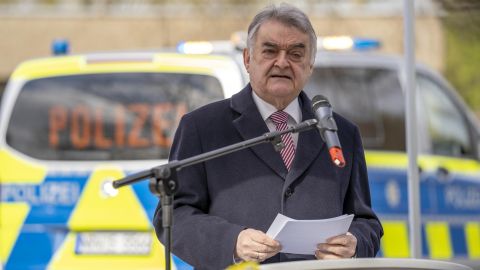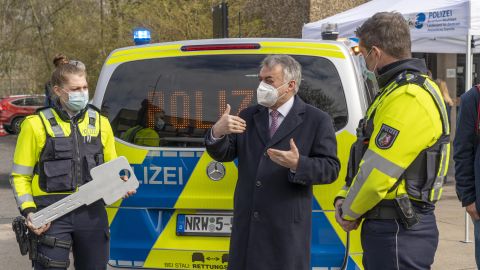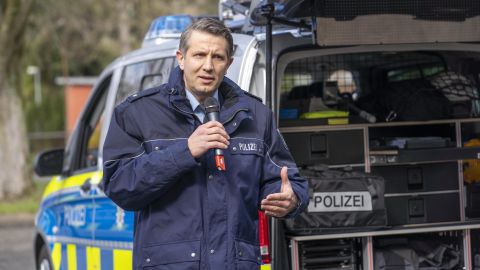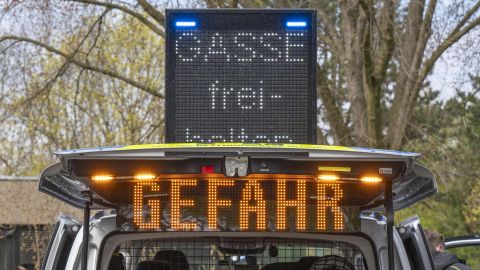The highway police in North Rhine-Westphalia will receive 180 new emergency vehicles. By the end of this year, 105 Mercedes Benz Vito vehicles will be delivered to the five highway police authorities in Cologne, Düsseldorf, Dortmund, Münster and Bielefeld. The remaining vehicles will be delivered by the end of 2023. The North Rhine-Westphalian Ministry of the Interior is thus complying with the wishes of the freeway police, who had favoured the minibus in a test phase.
"A minibus instead of a station wagon - this is a paradigm shift for the highway police," said Interior Minister Herbert Reul at the presentation of the new emergency vehicles on Thursday. Thanks to the higher body, the vehicles are more visible in highway traffic than the previously used, lower station wagon. The LED system can project warning signs onto a larger rear surface. Due to its size, the Vito also offers more space for the neon yellow warning film that covers the vehicle.
"Visibility is the biggest advantage of the new vehicles. Because visibility brings safety," says Reul. "The work of the highway police is extremely dangerous due to the high speed. The emergency vehicle is a workspace and shelter in one. A larger vehicle is a real safety plus."
The highway police will be able to keep a closer eye on things. The four video cameras installed at the front, rear and sides are new. They can be used to record violations in the emergency lane in particular. The side cameras in particular can record drivers plus license plates.
Some of the patrol cars have a hinged warning panel on the roof. It can be extended during an operation to display warning notices - in addition to the LED system at the rear. With the folding panel, the emergency vehicle reaches a height of three meters.
In the cities of North Rhine-Westphalia, the Mercedes Vito is already being used as a normal emergency vehicle off the highways. However, the highway version has been modified: The side cameras and the warning sign on the roof are not the only features that make the vehicle specialized for work on the freeway. With 239 hp, the freeway police vehicle also has a more powerful engine than the city model with 190 hp. "This allows the police officers to get to their workplace on the freeway more quickly - and in this case more safely," said Reul.
With the new, larger model, the Ministry of the Interior is responding to the highway police's wish for more payload options. The Vito has more space than its estate car predecessor, so that the freeway police officers have more storage space for their equipment.
"Barrier material is vital in the event of a freeway accident," said Herbert Reul and also presented a new folding beacon for traffic guidance, which is a pylon and advance warning beacon in one and thus replaces the conventional pylon.
The new vehicles also take into account the increased number of new recruits to the police force. "When a family grows, a bigger car is needed. Last year alone, we recruited 2,660 trainee inspectors. That's why there are regularly three instead of two officers in the patrol car and why the police family is now getting a minibus," said Interior Minister Herbert Reul.
The costs for the total of 180 new emergency vehicles amount to eleven million euros. The police in North Rhine-Westphalia look after around 2,200 kilometers of freeways and motorway-like federal roads. This also includes a large number of rest areas and service stations. The Cologne, Düsseldorf, Dortmund, Münster and Bielefeld police authorities are responsible for this extensive road network, in which the police maintain numerous freeway police stations, each of which has its own "freeway police" traffic inspectorate in the traffic directorates. One focus of the police's work is traffic monitoring, particularly with regard to distraction caused by smartphones, excessive speed (speeders), insufficient distance (tailgaters) and load safety.




